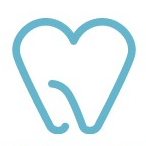The Big Secret of Dental Cleaning Steps, Do You Really Understand the Standard Dental Cleaning?
Dental cleaning, also known as "scaling and root planing", is a treatment method that uses an ultrasonic scaler or hand instruments to remove dental plaque and calculus from the teeth and perform a polishing procedure to restore the natural whiteness of the teeth.
Inflammation of the periodontal tissues is often manifested by symptoms such as bleeding gums, receding gums, food impaction, bad breath, and loose teeth. Dental cleaning helps control inflammation of the periodontal tissues and promotes the restoration of periodontal health. Individuals with periodontal health should undergo dental cleaning every six months to one year, while patients with periodontal disease should have the cleaning interval determined by the doctor based on the condition.
1. Ultrasonic cleaning
Ultrasonic cleaning is a method that converts ultrasonic electrical energy into ultrasonic vibration and removes dental calculus, tobacco stains, and tea stains through high-frequency oscillation. It helps treat oral diseases such as periodontitis. Ultrasonic cleaning has minimal damage to the teeth, significant effects, and does not cause harm to oral health.
2. Air abrasion cleaning
Sandblasting cleaning is a supplement to ultrasonic teeth cleaning and is suitable for people with pigmented teeth, such as long-term smokers or those who drink dark-colored beverages. Sandblasting cleaning uses high-pressure airflow to sand teeth powder together with water to scrub the teeth, removing dental plaque, tobacco stains, tea stains, and other pigments, and also acts as a refining and polishing effect. The teeth treated with sandblasting are very clean, and dental calculus is not easy to deposit again.
3. Tooth polishing
Tooth polishing is the use of rubber dipped in polishing paste to rotate and friction on the tooth surface at a low speed to remove scratches on the teeth and make the tooth surface smooth. Similar to waxing after car washing, tooth polishing can delay pigment deposition.
4. Hydrogen peroxide flushing
The final step in the tooth cleaning process is rinsing with a 3% hydrogen peroxide solution to thoroughly remove residual tartar fragments and granulation tissue, and control the proliferation of bacteria around the teeth.
It should be noted that not all patients are suitable for ultrasonic cleaning or sonic cleaning. Infectious disease patients (such as tuberculosis, positive hepatitis B antigen, HIV infection, etc.) should use manual cleaning instruments for manual cleaning and prohibit the use of ultrasonic dental cleaning machines or sonic dental cleaning machines.
It is very important to choose a formal and professional hospital for teeth cleaning. The formal teeth cleaning process includes ultrasonic cleaning, sandblasting treatment, teeth polishing, and hydrogen peroxide flushing. On the other hand, informal teeth cleaning usually skips the sandblasting and polishing steps, which greatly reduces the effectiveness. Therefore, we recommend everyone to choose a formal and professional hospital for teeth cleaning.
Lastly, it is very important to get teeth cleaning done 1-2 times a year. We hope everyone can follow the standards for teeth cleaning and maintain good oral health.

